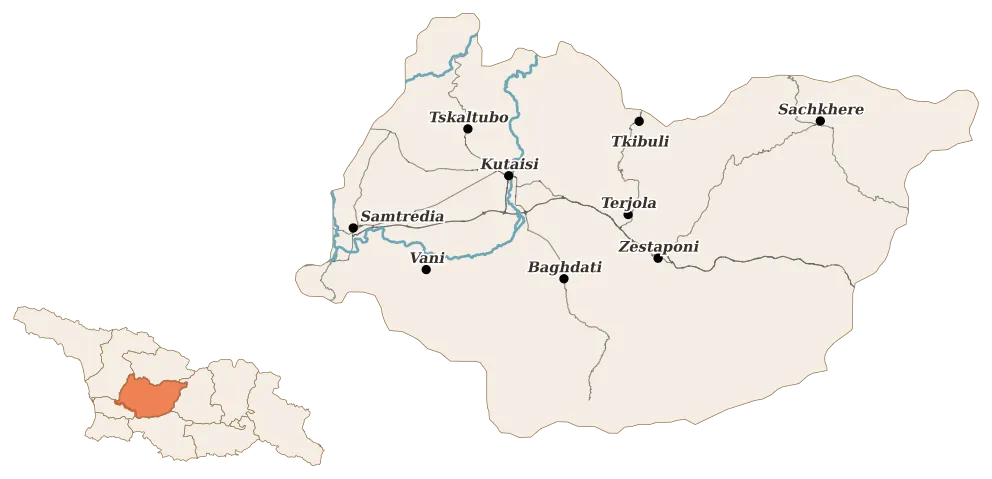Regions
Imereti - Georgia's western wine crossroads
2 min

Key facts
- Situated in western-central Georgia; stretches from the Likhvi Range eastward to Kolkheti lowlands
- Vineyard elevations: ~50 m to ~500 m above sea level
- Soil variety: clay, marl, alluvium, mixed with local sediments in hillside slopes
- Main grape varieties: Tsolikouri, Tsitska, Krakhuna, Otskhanuri Sapere, Argvetuli Sapere, and others
- PDO: Sviri, a dry white appellation using regional white varieties
Landscape & climate
Imereti is defined by its varied terrain: rolling hills, river valleys, and transitional zones toward lowland zones near Kolkheti.
Vineyards cluster along gorges of the Rioni River and tributaries such as Kvirila, Chkherimela, Dzirula, Khanistskali.
The climate here integrates humid western influences with some continental features. Rainfall is higher than in eastern Georgia; humidity and precipitation must be managed carefully. Cooler nights and cloud cover moderate heat. The diversity in slope aspect, altitude, and soil gives many microclimates.
Because of the wetter climate, drainage, canopy management, and disease control (mildew, rot) are more critical here. Many producers adopt organic or low-intervention practices.
Grape varieties & styles
Imereti is especially known for its whites. The dominant local grapes are: Tsolikouri, Tsitska, Krakhuna, Otskhanuri Sapere.
Wine styles found here:
- Dry whites - clear, mineral, medium body, fruit forward
- Skin-contact / amber whites - milder than eastern styles, less aggressive maceration, more subtle tannins
- Light reds / rosés - from local red varieties (increasing in experimentation)
- Blended whites - combining two or more local varieties to balance aromatics, texture, acidity
PDOs & appellations
Sviri is the main PDO name for the region. It produces dry white wines from regional white grapes (Tsolikouri, Tsitska, Krakhuna) in and around the village of Sviri.
Tasting & character
Wines from Imereti tend toward elegance, brightness, and subtle texture:
- Dry whites: citrus, green apple, white flower, minerals; moderate body, clean finish
- Skin-contact / amber wines: soft tannins, dried herbs, tea, nuts, gentle spice
- Light reds / rosés: red berries, floral notes, low tannin, subtle earth
- Blends: combine freshness and structure, often more balanced
They tend to have higher natural acidity and lower tannins than heavier eastern styles.
Wine tourism & cellars
Imereti's wine scene is vibrant, with many small producers and boutique wineries reviving old vineyards and traditions.
Notable spots include Baia's Wine and Tchrebalo Winery, where visitors can experience natural wines made with traditional methods.
Explore vineyard roads, buried churi cellars, and enjoy local food pairings in villages around Vani, Baghdati, Zestaponi, and Terjola.
